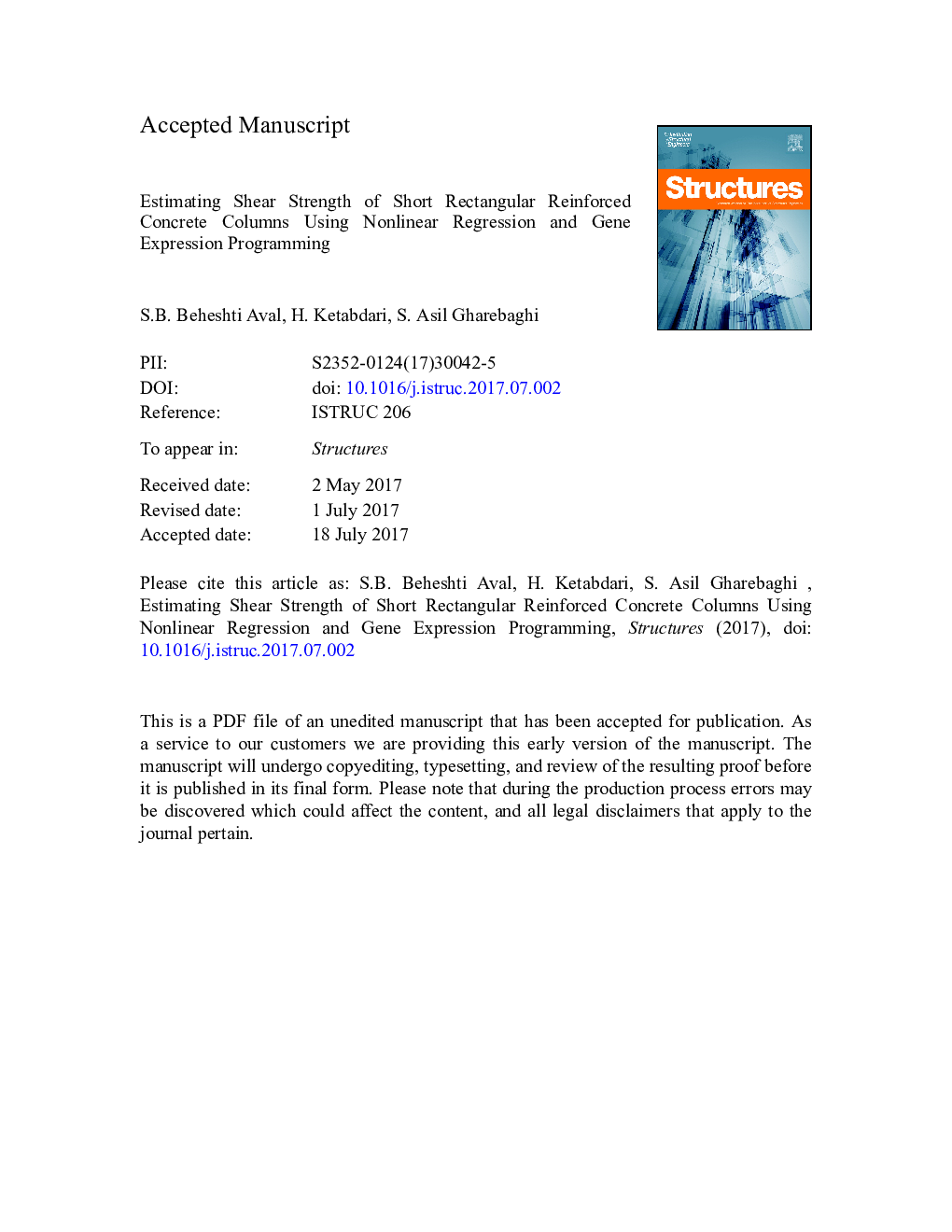| Article ID | Journal | Published Year | Pages | File Type |
|---|---|---|---|---|
| 4927844 | Structures | 2017 | 31 Pages |
Abstract
Shear collapse may be considered as the most important reason of the failure of Short Reinforced Concrete Columns (SR-RCCs) subjected to strong earthquake or other extreme loads. Although the current design provisions are mainly based on experimental data, they are too simple to consider all contributing factors. In this study, 30 test results of SR-RCCs from available laboratory tests have been collected. Next, an accurate Finite Element (FE) model is calibrated using 10 out of 30 laboratory tests. It is shown that the calibrated model successfully represents the behavior of SR-RCCs. Subsequently, 53 simulations are performed using the calibrated model. The results are used to establish a Gene Expression Programming (GEP) model, which considers most effective parameters such as axial force, transverse reinforcement ratio, cross-sectional aspect ratio, compressive strength, and ductility. Besides, a Non-linear Regression (NR) is also presented using the same simulation results. Finally, the remaining validation laboratory tests are used to compare the accuracy of the GEP-based and NR models with ACI and EC2 design codes. The validation results in an average error of 15% for GEP, whereas for NR, ACI, and EC2 the average errors are 50%, 45%, and 43%, respectively. It is concluded that the proposed model, developed by GEP, provides more accurate results in the prediction of shear strength of SR-RCCs in comparison with the others at least within available test results.
Related Topics
Physical Sciences and Engineering
Engineering
Civil and Structural Engineering
Authors
S.B. Beheshti Aval, H. Ketabdari, S. Asil Gharebaghi,
